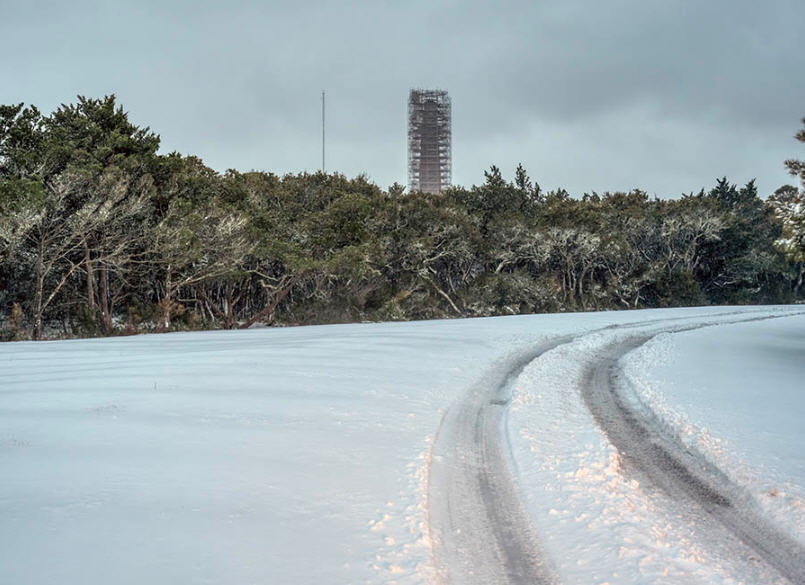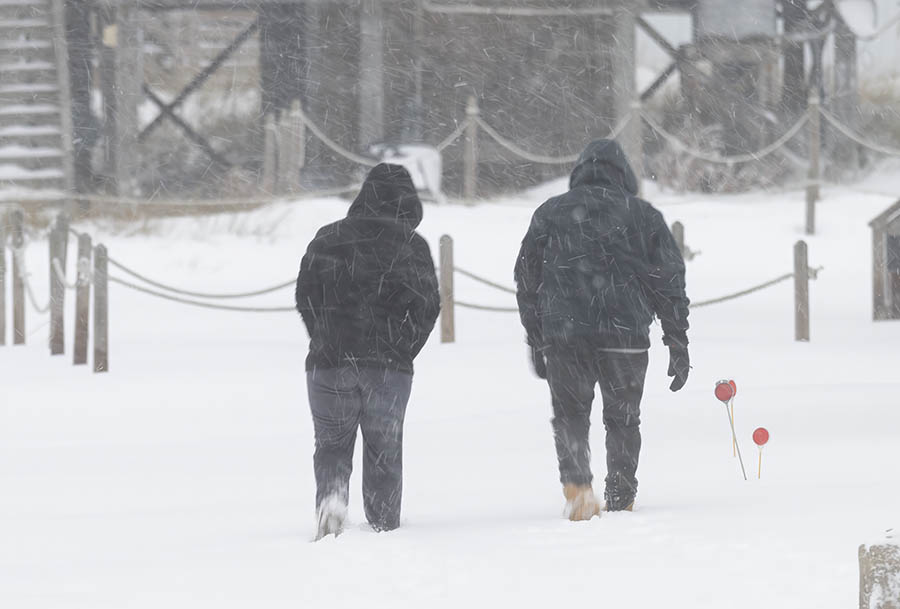Mistletoe: A native plant steeped in lore
Mistletoe: A native plant steeped in lore
Mistletoe: A native plant steeped in lore
Once the winds of fall have stripped away the leaves of our deciduous trees, clusters of green foliage can still be seen clinging to their bare branches. These clusters are not in all of the trees, but here and there you can find some, usually oaks and red maples, with these round shaped objects that are obvious once you start looking for them.
The green leaves and white berries of this foliage are not produced by the trees but are the product of the mistletoe, a plants long associated with Christmas holiday romance.
A native of the eastern North America, mistletoe, Phoradendron serotinum , is a semi-parasitic plant that can absorb organic matter, water and minerals from the host tree. The first part of scientific name, in fact, is Greek for “thief tree.” However, mistletoe isn’t completely dependent on the tree. Like all plants, it has the ability to produce chlorophyll and pull energy from the sun.
But a bundle of mistletoe has no roots. It does have sinkers that penetrate and embed into the branches of the host tree. Mistletoe has been called “vampire plant,” since it will “bite” into the tree and suck out its water and minerals, allowing it to stay green all year long and survive periods of drought. A tree infested with mistletoe can weaken and die.
Among the thick green leaves are small, sticky white berries that some birds, such as robins and bluebirds, love to eat. The seed in the berry is spread when the birds fly high onto the branches of other trees and eliminate the seed. Still sticky, the seed will adhere to a branch and eventually start a new plant. The English word for the plant is derived from two Anglo-Saxon words that mean “dung on a twig.”
Ancient cultures valued mistletoe as a sacred mystical plant and used it as an aphrodisiac to promote fertility and life. It was also placed in cradles to protect infants from being stolen by fairies and hung in homes to protect the house from lightning. Mistletoe was once a symbol of peace, and ancient warriors who found themselves fighting under mistletoe were obligated to stop fighting until the next day.
It has also been used as a folk medicine to treat a variety of conditions such as arthritis, infection, and epilepsy. A number of herbal remedies still use mistletoe, even though it is considered poisonous. So, just to be on the safe side, don’t eat the leaves or berries and make sure that your pets don’t ingest them either.
The tradition of hanging a sprig of mistletoe in the house and kissing under goes back thousands of years and is linked to a Scandinavian custom involving Frig or Frigga, the Norse Goddess of Love. After her son was killed with an arrow made of mistletoe, Frigg declared that mistletoe will now bring love, not death, and that she would kiss those who pass under the mistletoe.
Frigg had a good idea there, but as a young tot scurrying around the house during the Christmas holidays, a bundle of mistletoe tied to a doorway hung like a hatchet over the Christmas dinner turkey. The idea of being smooched on by my sisters and aunts terrified me, and I moved through any mistletoe tethered doorway faster than holiday cookies on a platter. The mistletoe custom notes that each time someone kisses under the mistletoe that a berry must be plucked off the twigs. After all the berries have been picked, the kissing must stop. If I knew that then, I would have pulled off all the berries.
As a young teenager, my mother once asked me to go out into the woods and collect some mistletoe to decorate the house.
I knew that mistletoe was high in the trees and difficult to reach, so I asked some of my buddies to help me retrieve some of the plant. We found a tree with the closest cluster about 20 feet up and out on some flimsy branches. One of my friends immediately began to bear hug the trunk of the tree and made his way to the first branch about 10 feet up. He reached with one hand and grasped the branch, and then when the other hand grabbed hold, the full weight of his body snapped the branch with a thunder-like crack.
He landed flat on his back with a thud and the dry crisp forest litter leaves puffed out around his body in a halo and fluttered about like butterflies. It took a few seconds, but he was finally able to suck air back into his lungs.
As my buddy struggled to catch his breath we realized that climbing the tree was no longer an option.
We stared up at the mistletoe, and my other friend had an idea. He took off running. After about 20 minutes he returned — not with a ladder, but with a shotgun. Probably not one of the smartest things that I’ve done, but with a quick aim and one shoulder bruising blast, mistletoe was raining from the clear blue sky.
Ancient customs state that the mistletoe must not touch the ground, but there was no way we could catch the twigs as they fell. We collected enough to share with a number of families, and I guess a lot of kissing went on that year.
How and when mistletoe, and all that kissing, became associated with Christmas is often debated. It is known that the ancient Celtic Druids collected mistletoe for their ceremonies just after the winter solstice, which is near Dec. 25. Mistletoe was considered sacred to them and carried great powers. They cut down the mistletoe with a golden sickle and would adorn their homes with the foliage to bring joy, blessings and good health while protecting the family from bad spirits. These pagan rituals were later frowned upon by those practicing Christianity, and this custom faded away for some time.
But the rituals of the past were preserved in folklore, and during the Victorian era this custom began anew and continues today.
During the Great Depression and Dust Bowl era, mistletoe was regarded with great respect for its persistence and stubbornness that allows it to remain green during drought and cold weather. Oklahoma, which suffered greatly during those days, actually named mistletoe the official state floral emblem.
FINDING YOUR OWN MISTLETOE
If you want to have some mistletoe for holiday decorating, you can take a hike out into the woods, which will be fun even if you don’t find any mistletoe.
The first rule of mistletoe collection is to get permission from the landowner if you do not own the land. Then go scouting through the woods for what looks like green baskets sitting on the skeleton of bare branches of oak trees. The Navajo name for mistletoe is actually “basket on high.”
Mistletoe hunting in North Carolina
(This story is provided courtesy of Coastal Review Online, the coastal news and features service of the N.C. Coastal Federation. It is reprinted from an Aug. 1 story. You can read other stories about the N.C. coast at www.nccoast.org.)






















